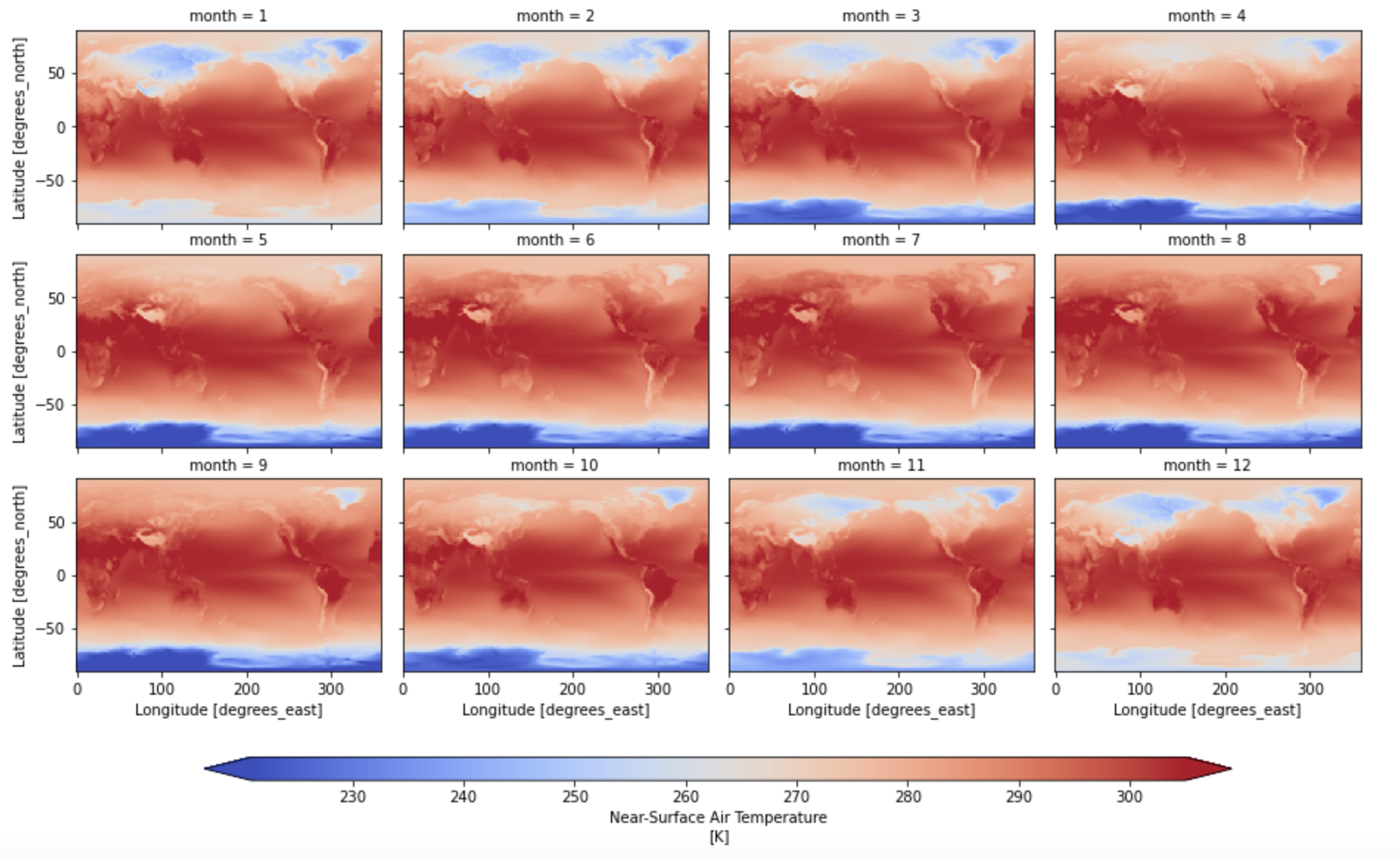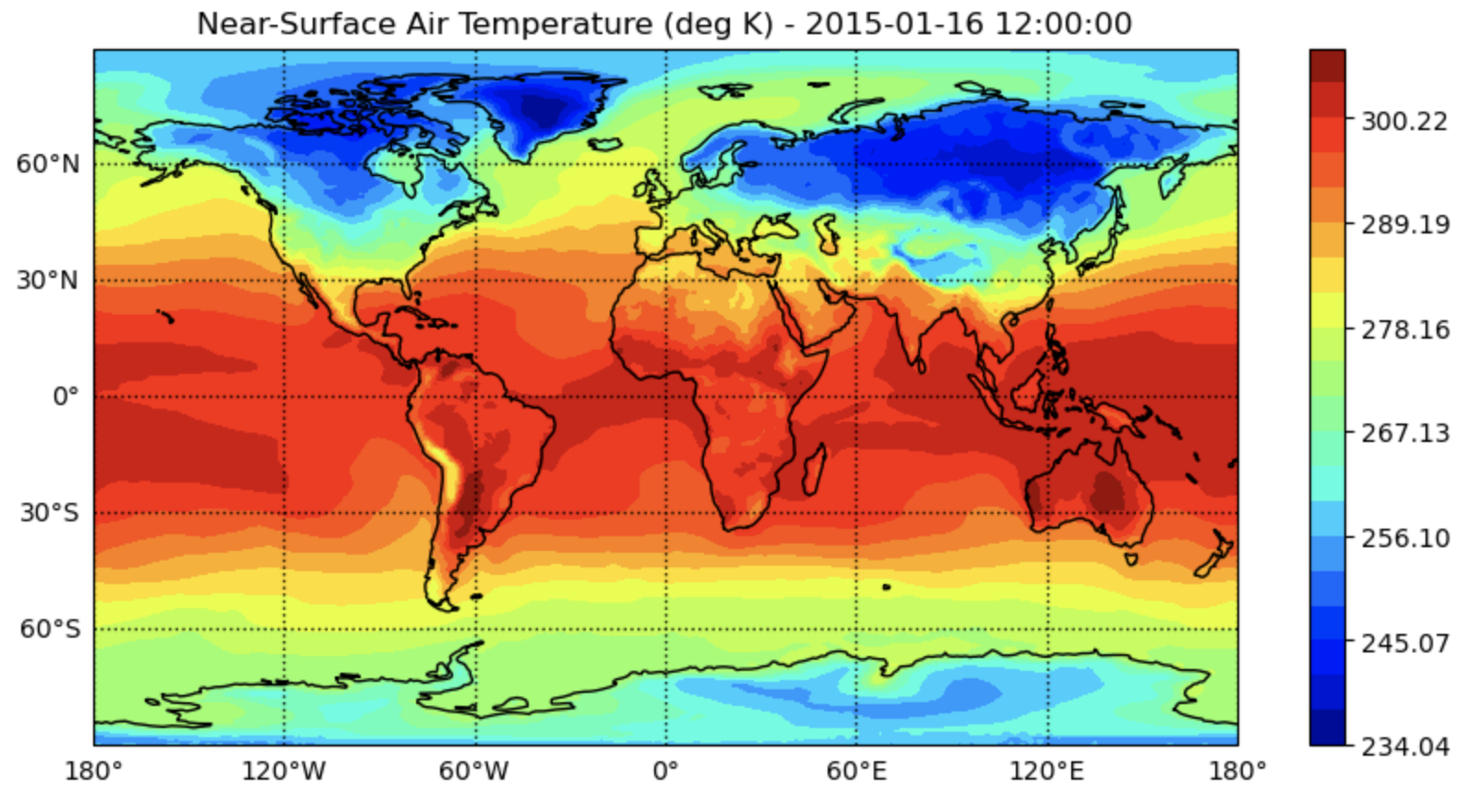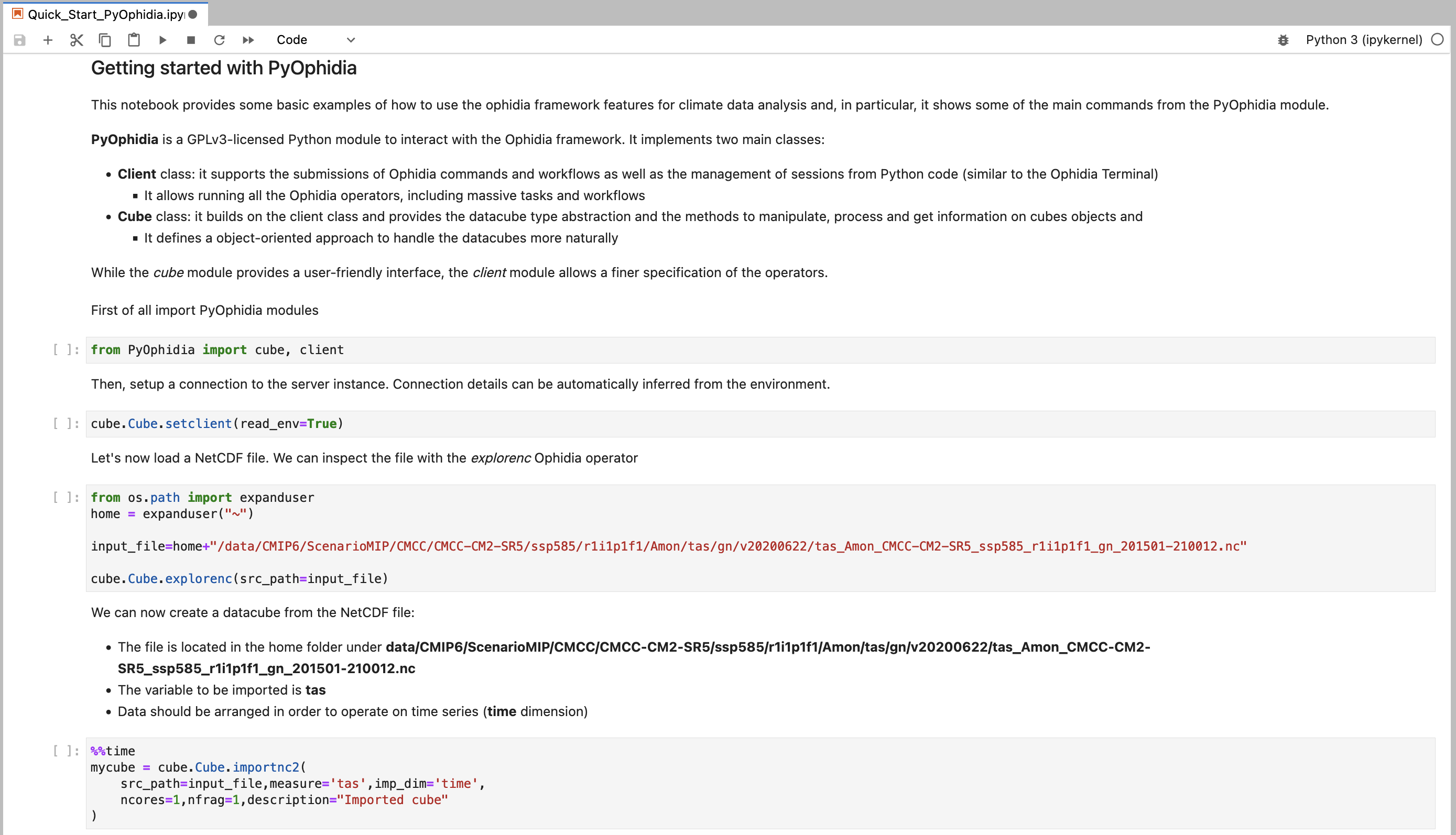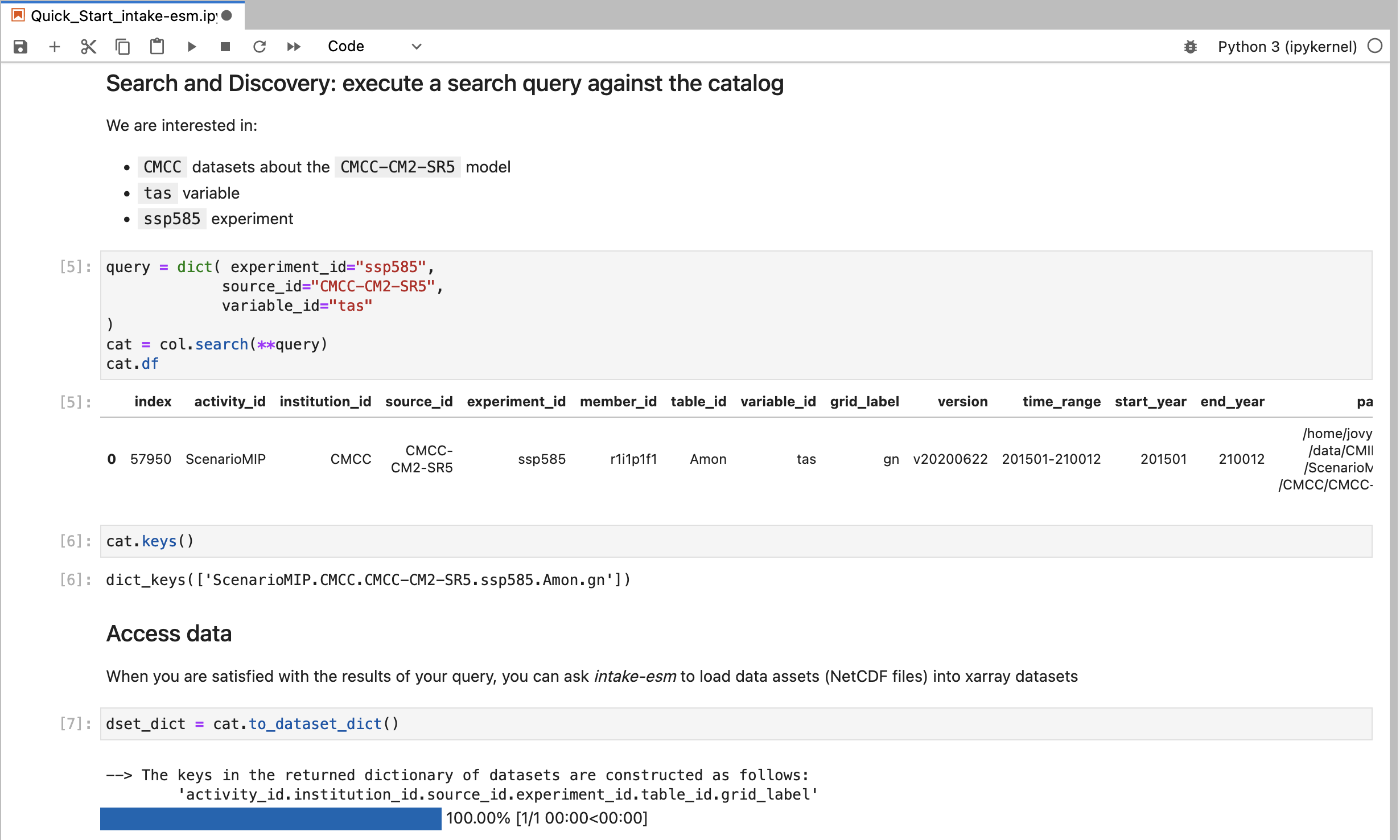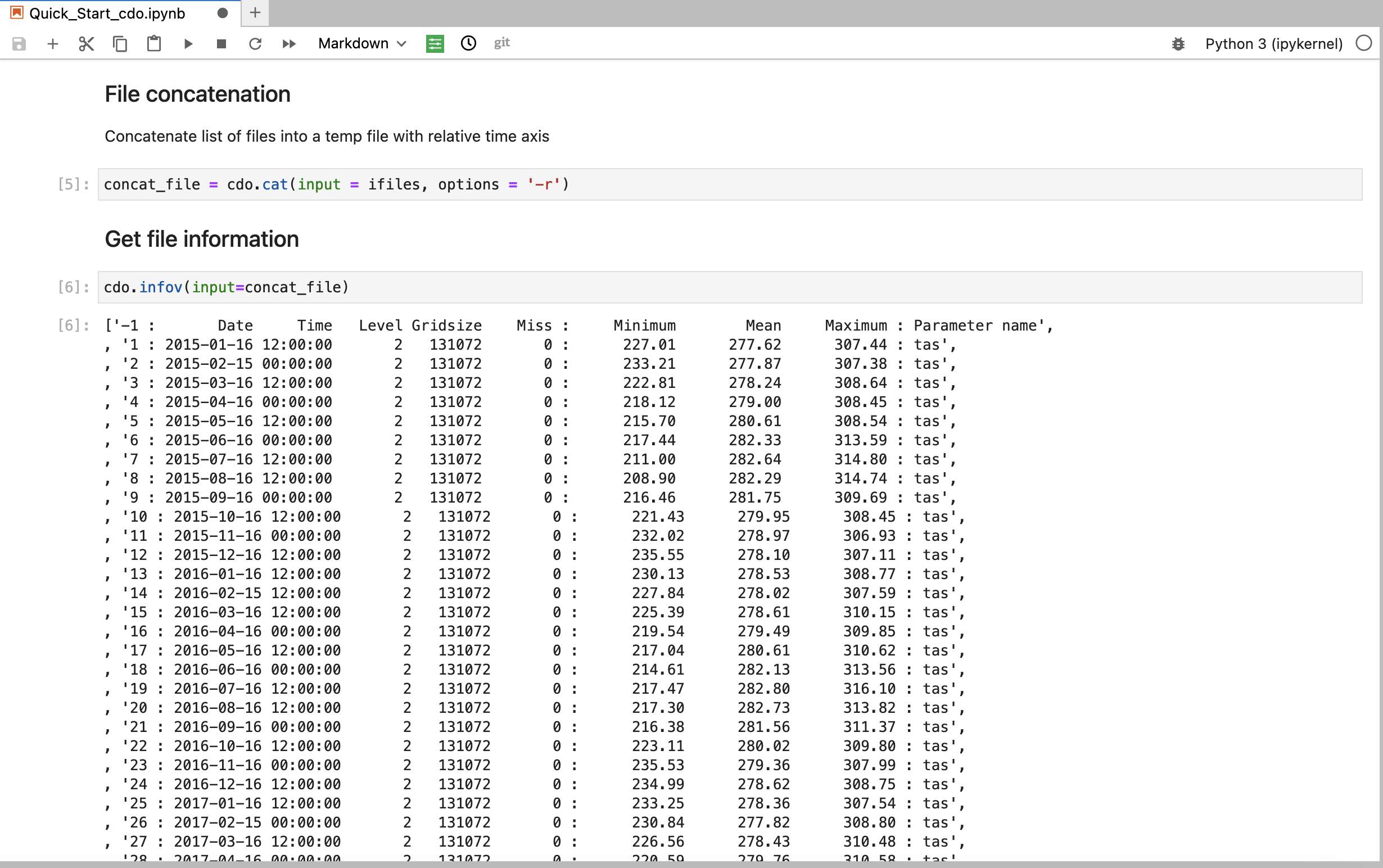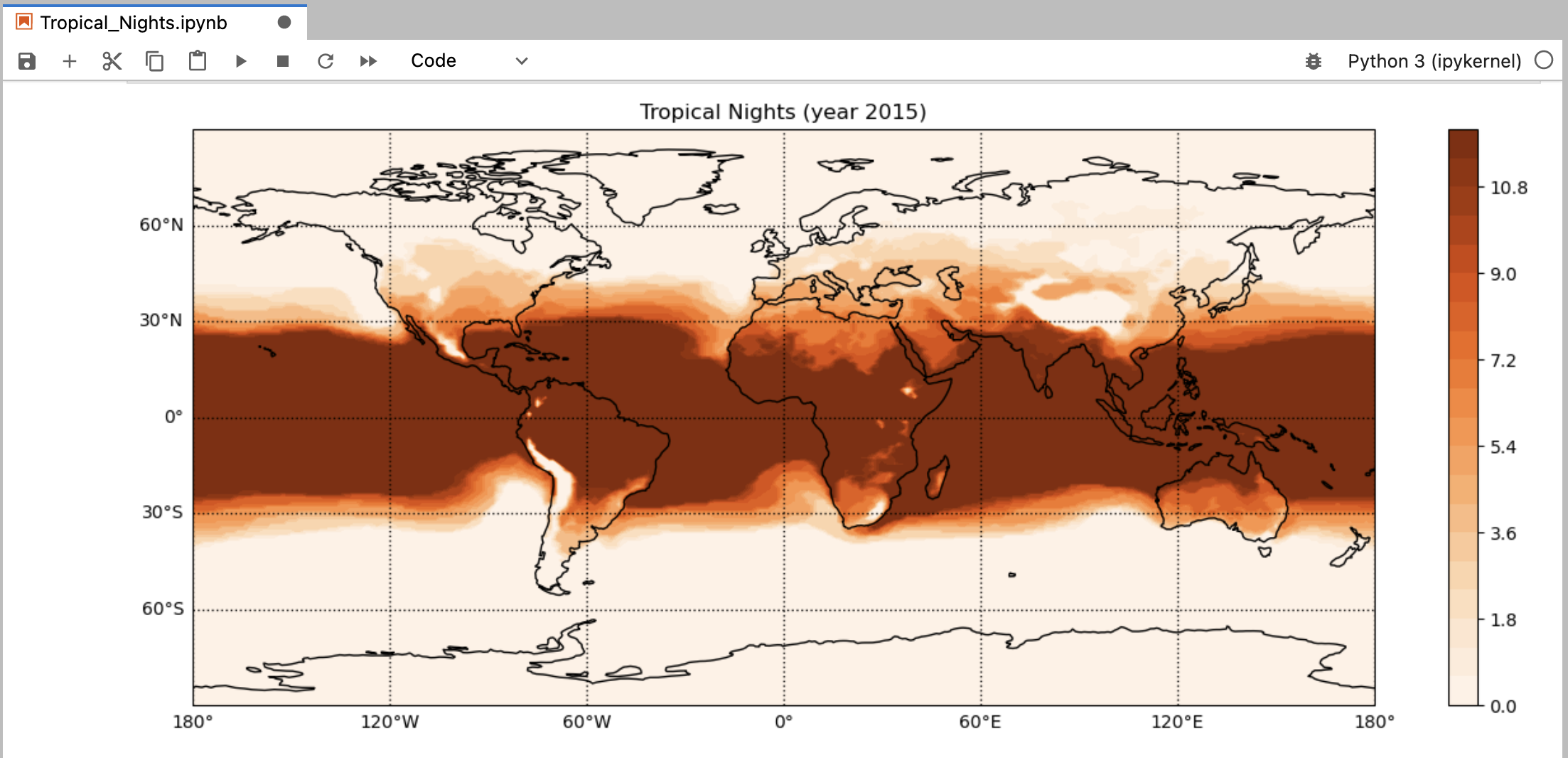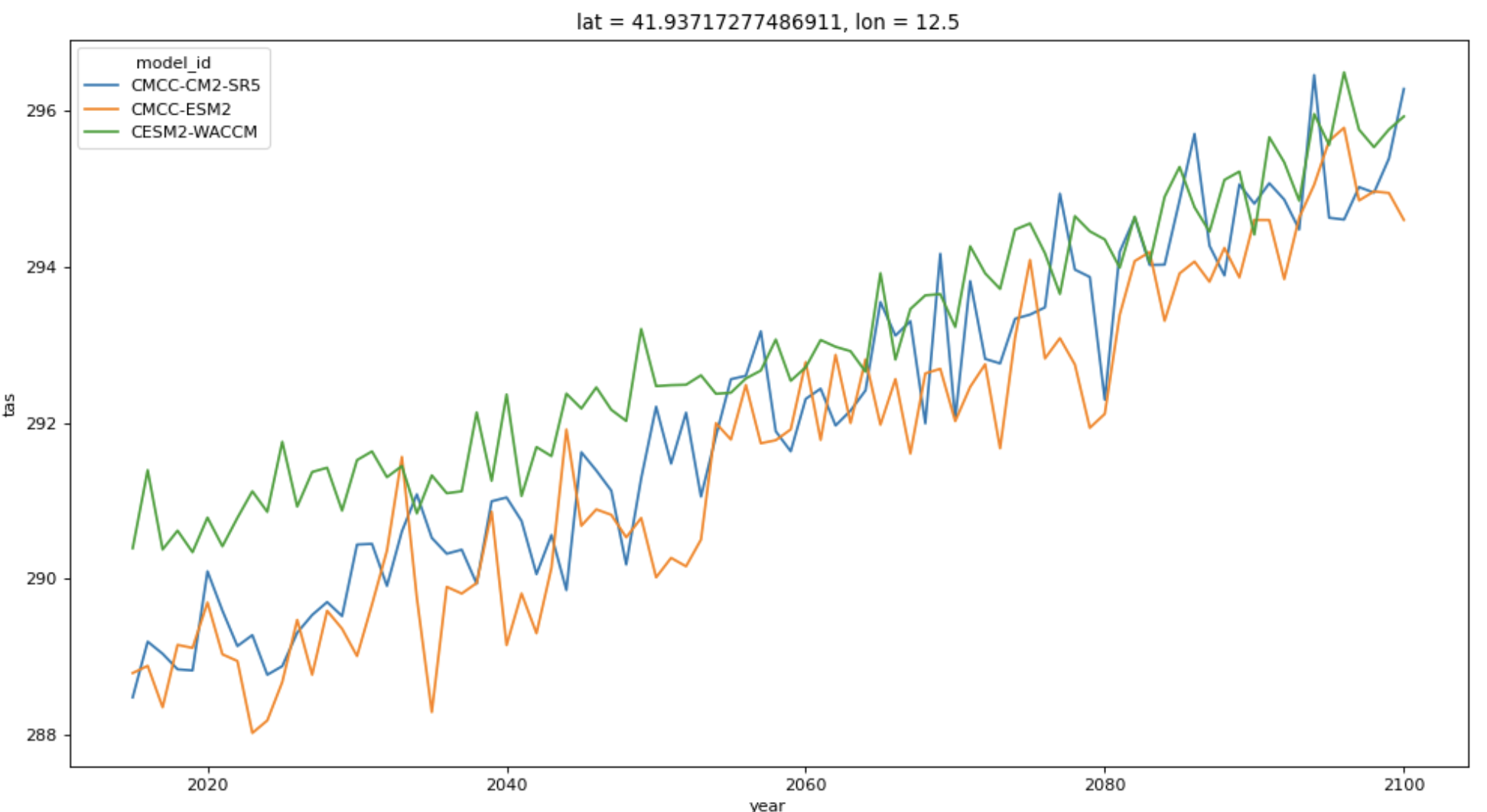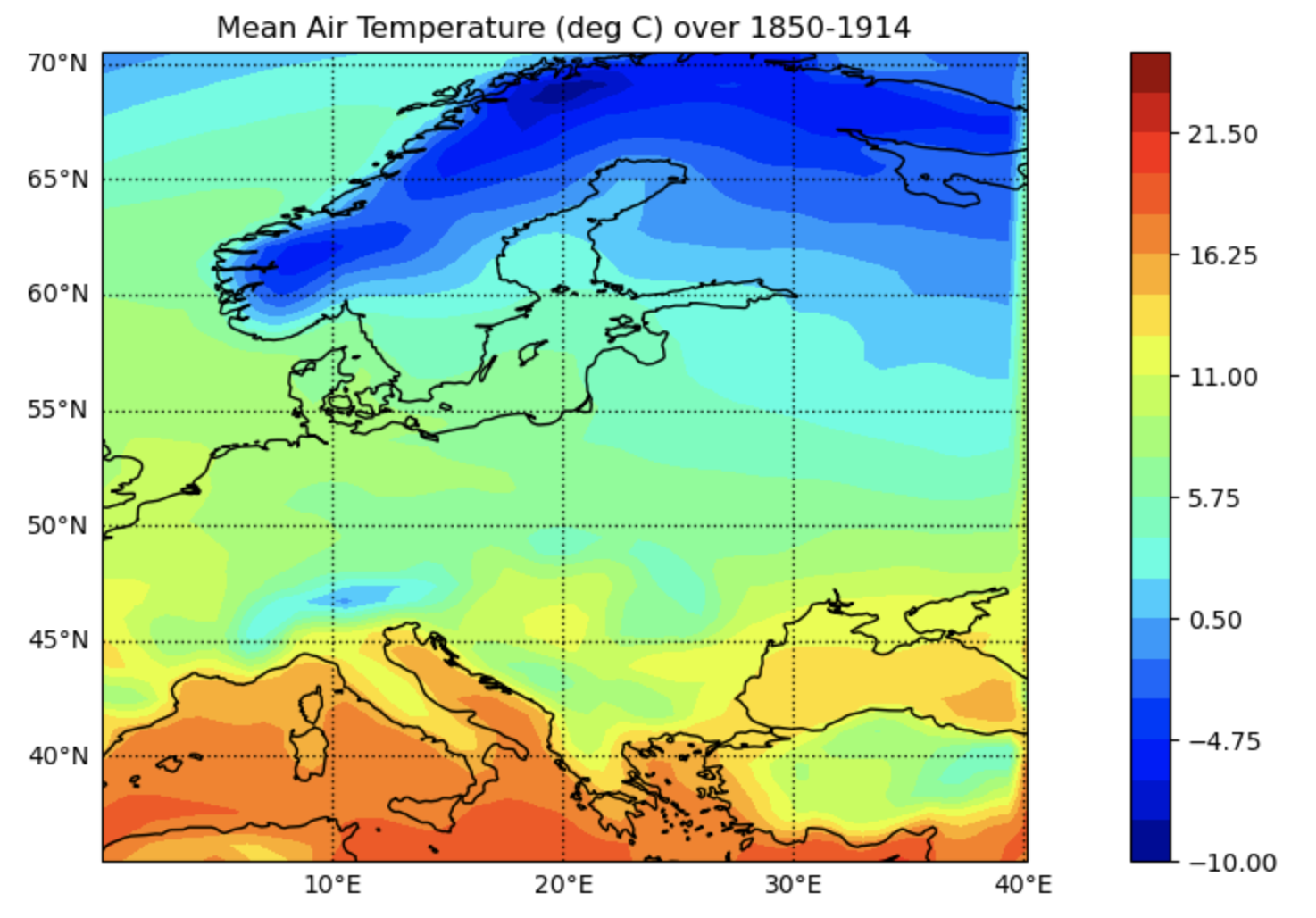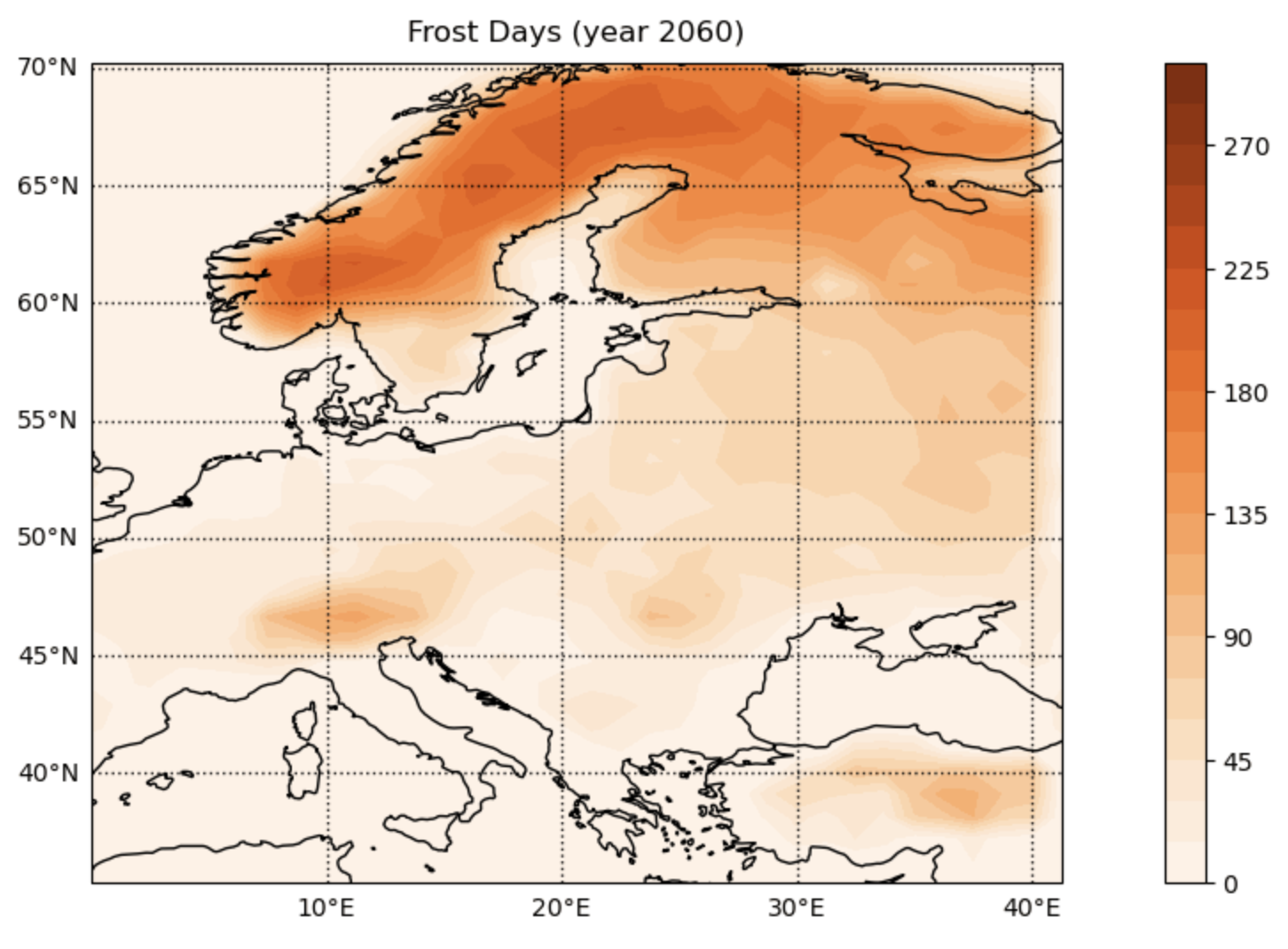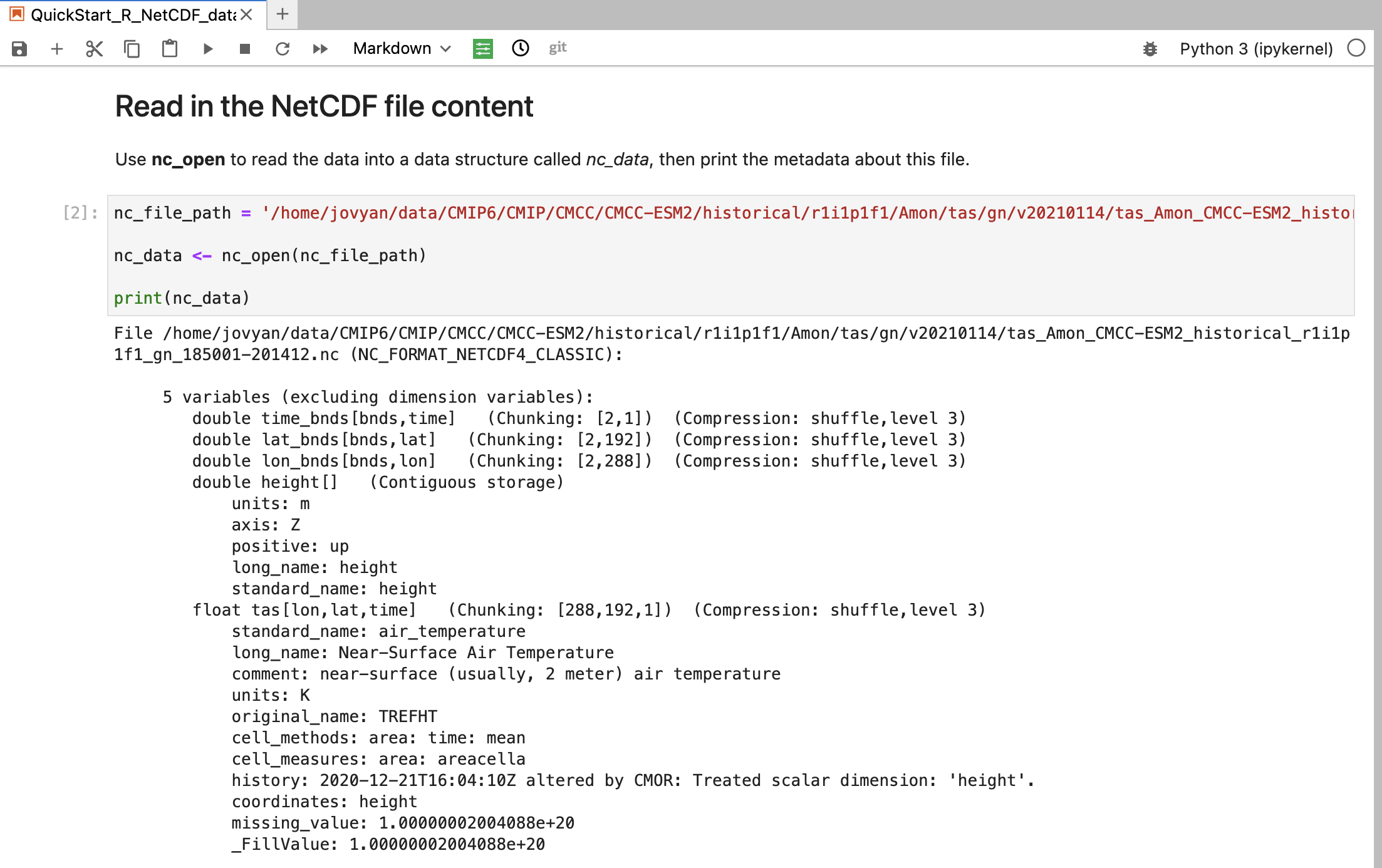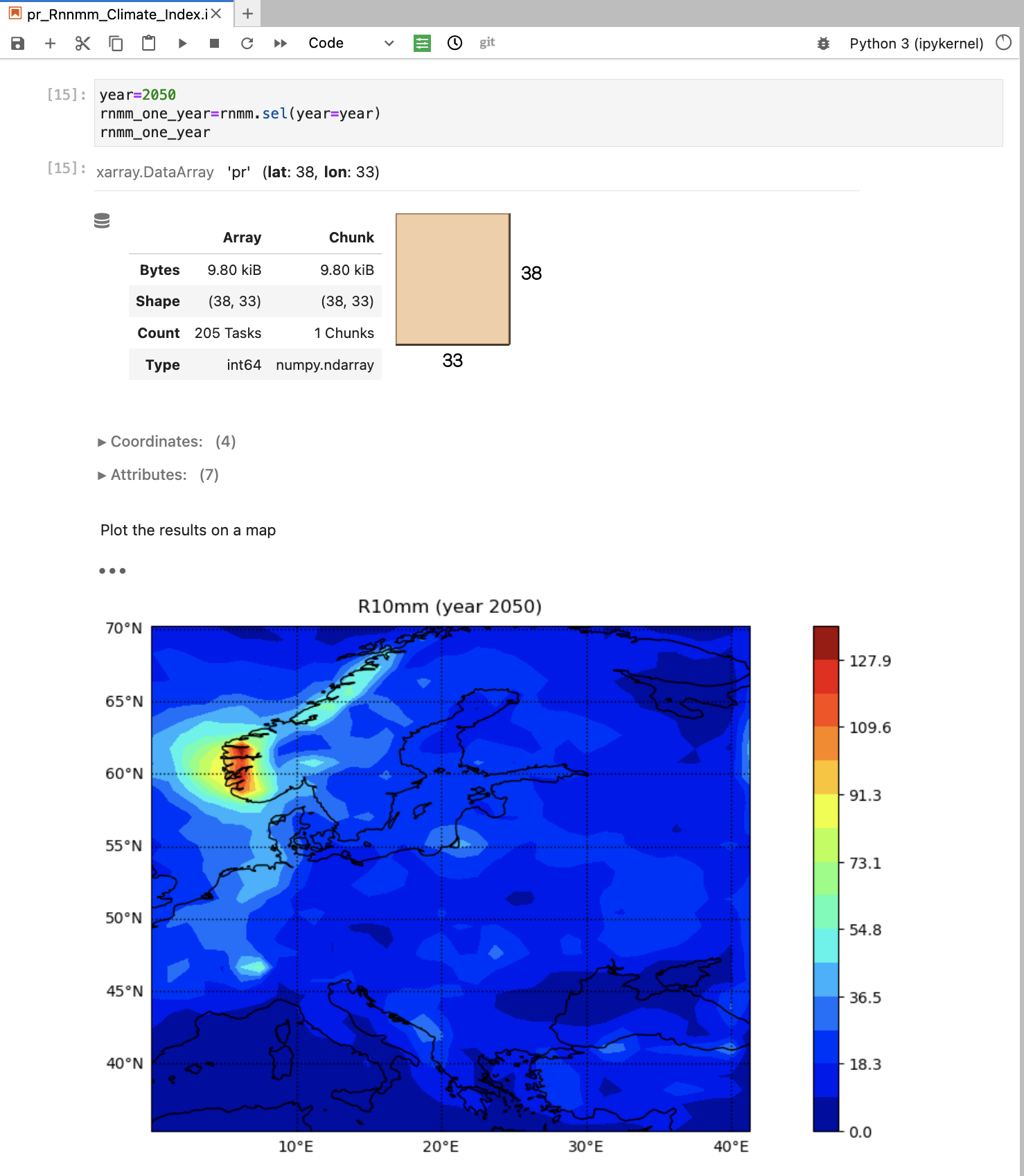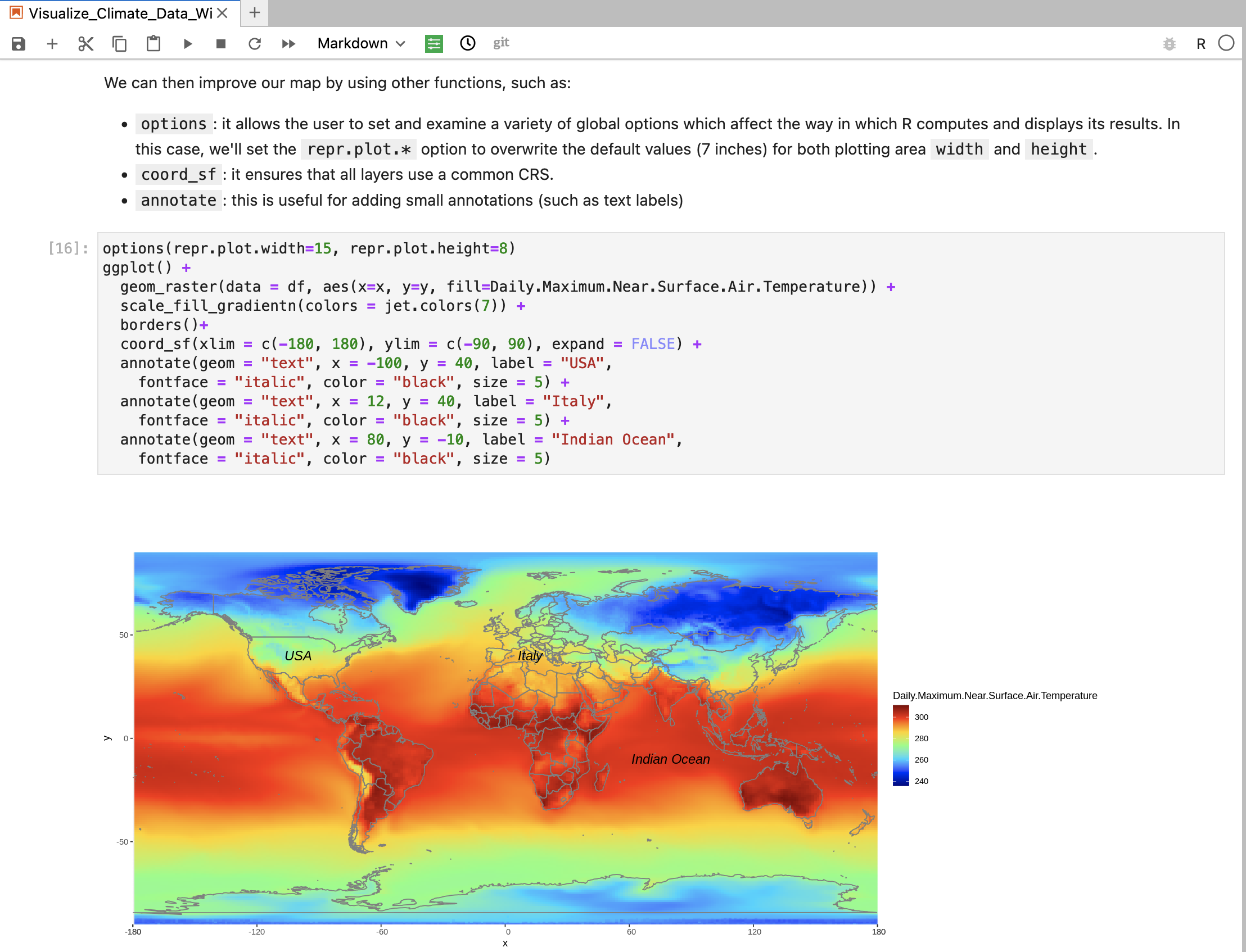The notebooks folder located under your home directory contains some examples for running data manipulation, analysis and visualization.
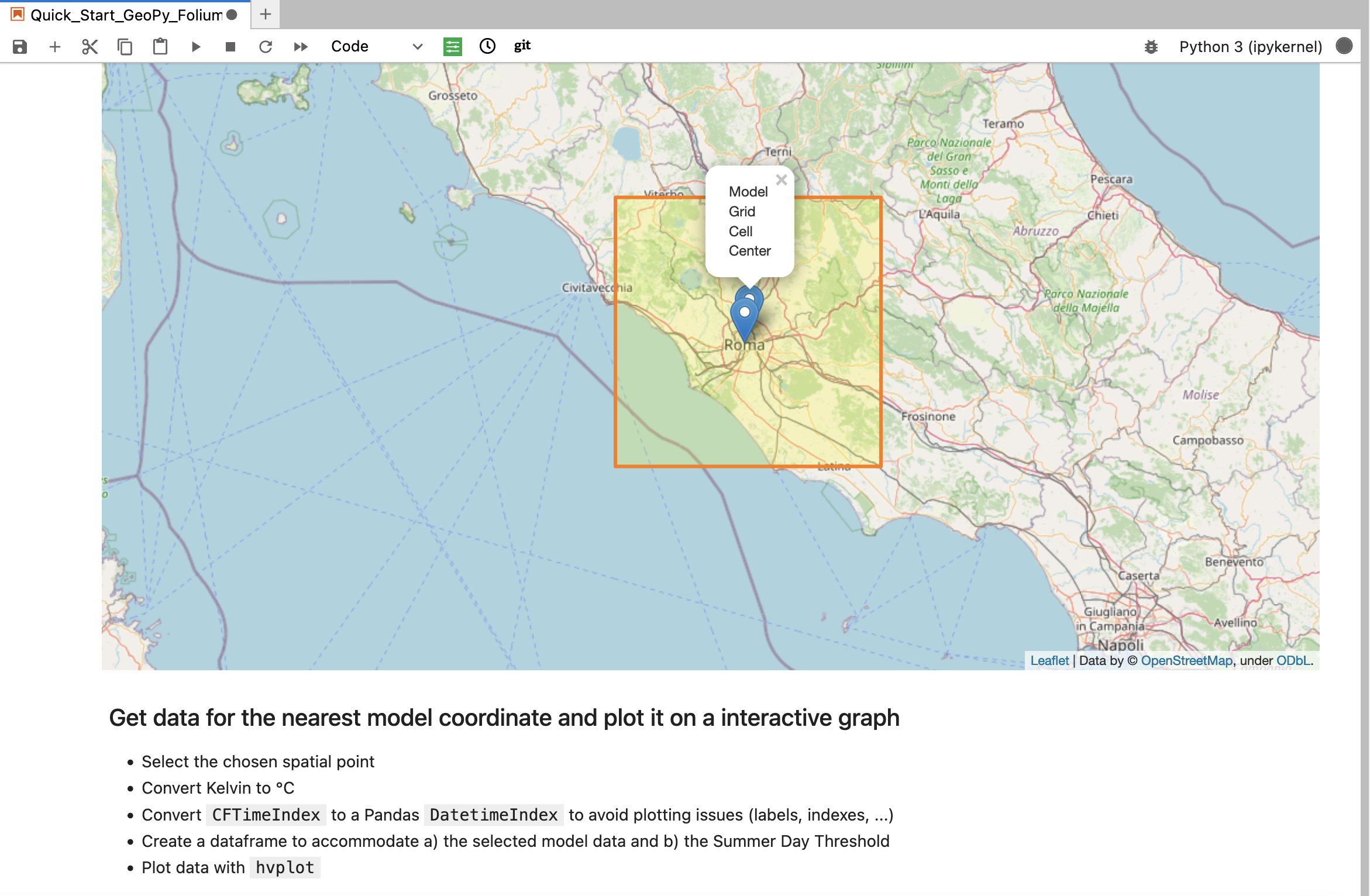
Quick Start GeoPy, Folium and hvPlot
Get started with GeoPy and Folium to deal with coordinates and interactive geographical maps, and hvplot to create interactive plots.
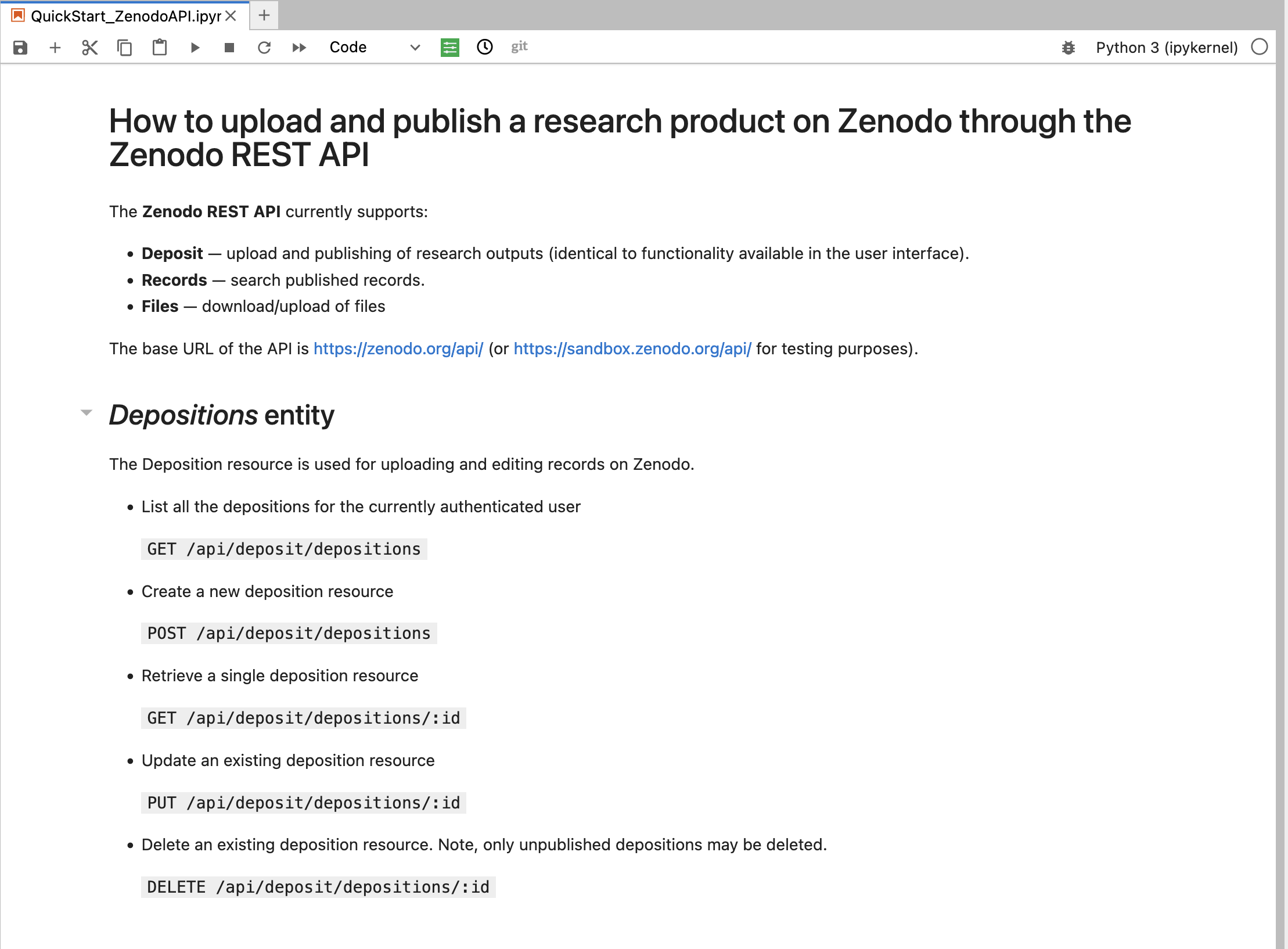
Publish a research product on Zenodo
The notebook shows how to upload and publish a research product on Zenodo through the Zenodo REST API.
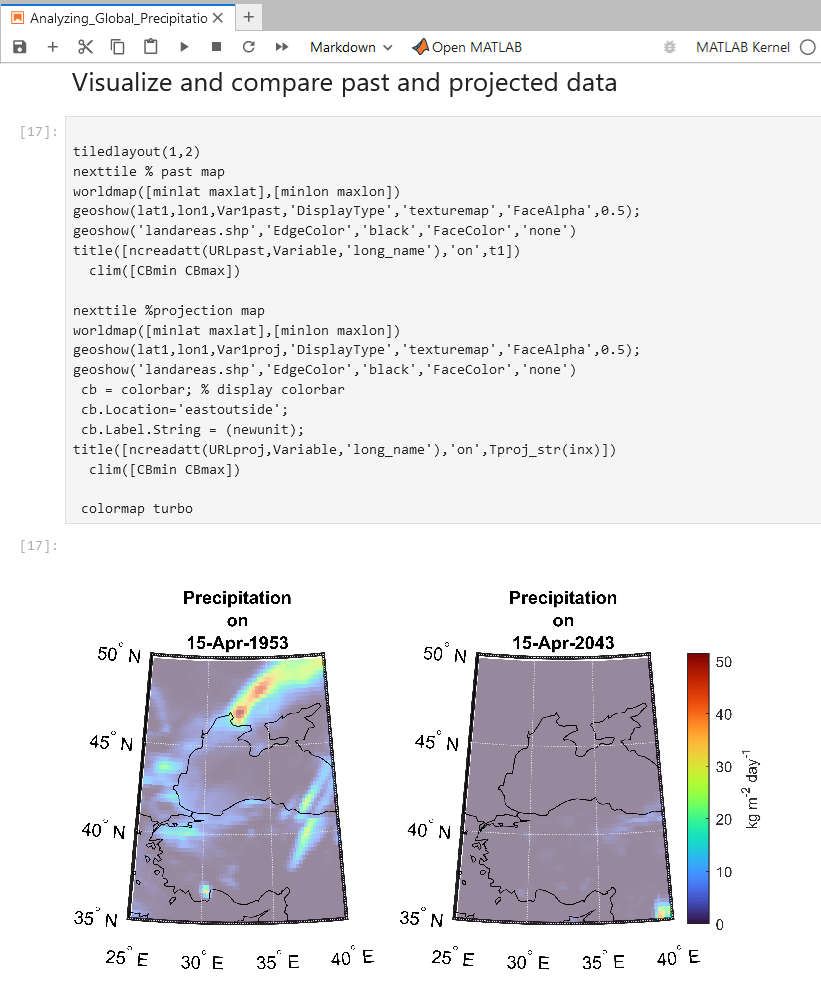
Analyze and visualize climate data with MATLAB
The notebook shows how to run MATLAB code in a Jupyter notebook using MATLAB kernel for Jupyter, or open a browser-based version of the MATLAB development environment to directly access MATLAB apps and other interactive capabilities.
